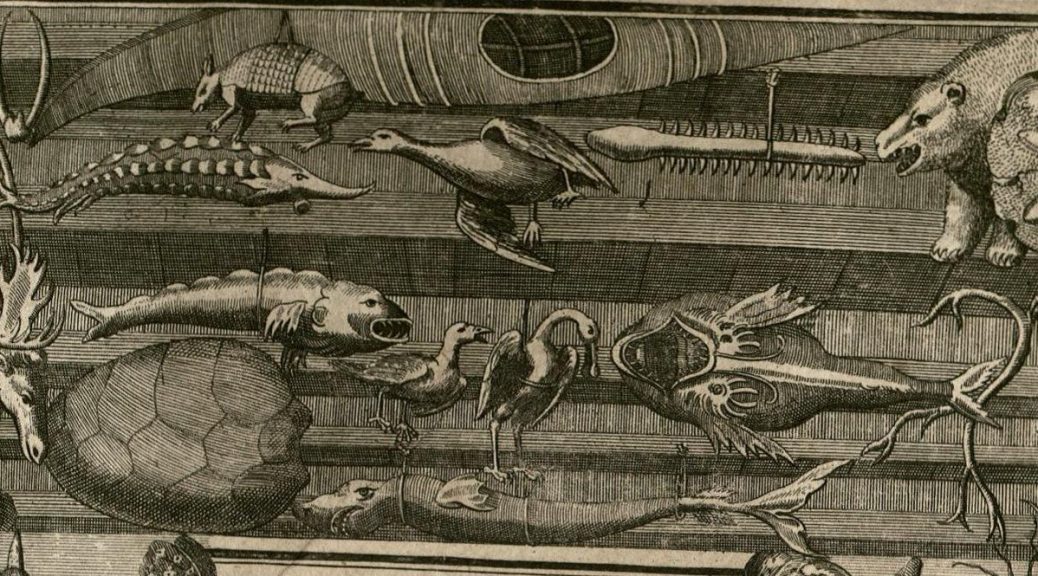Post contributed by Rachel Ingold, Curator, History of Medicine Collections
In the sixteenth century, printed works depicting early museums and personal collections of physical objects began to emerge. Such collections were curated overwhelmingly by men of a certain standing in society, including a number of physicians. Personal collections included items such as shells, gems and minerals, coins, sculptures, fossils and animals, and more. Rooms showcasing such objects were stuffed with as much as could be displayed, including mounting crocodiles on ceilings and finding a place for the unicorn horn (or rather, the tooth of the narwhal, an arctic whale).
 These cabinets of curiosities, or wunderkammer, provided a space for visitors to see objects from the world within one room – objects that were both natural as well as man-made. In many ways, these cabinets of curiosities were precursors to modern day museums, and printed works from the sixteenth through eighteenth centuries provide text as well as stunning images of the legacy of wunderkammer.
These cabinets of curiosities, or wunderkammer, provided a space for visitors to see objects from the world within one room – objects that were both natural as well as man-made. In many ways, these cabinets of curiosities were precursors to modern day museums, and printed works from the sixteenth through eighteenth centuries provide text as well as stunning images of the legacy of wunderkammer.
The History of Medicine Collections has recently acquired a magnificent work of wunderkammer, a work by German physician Michael Bernhard Valentini (1657-1729), titled Museum Museorum, printed in 1714. This three volume set, printed in two volumes, includes catalogs from other such curiosity collections as well as a list of all known museums at the time (of which he notes are around 159). Numerous copper engravings are found throughout the text, including six extra-illustrated engravings printed on blue paper. Along with providing a survey of museums and details on collecting, Valentini also covers topics including animals, plants, minerals, and their medicinal use, along with shells, fossils, physics, and natural philosophy.
These volumes and other printed books related to cabinets of curiosities are available for researchers in the Rubenstein Library.



